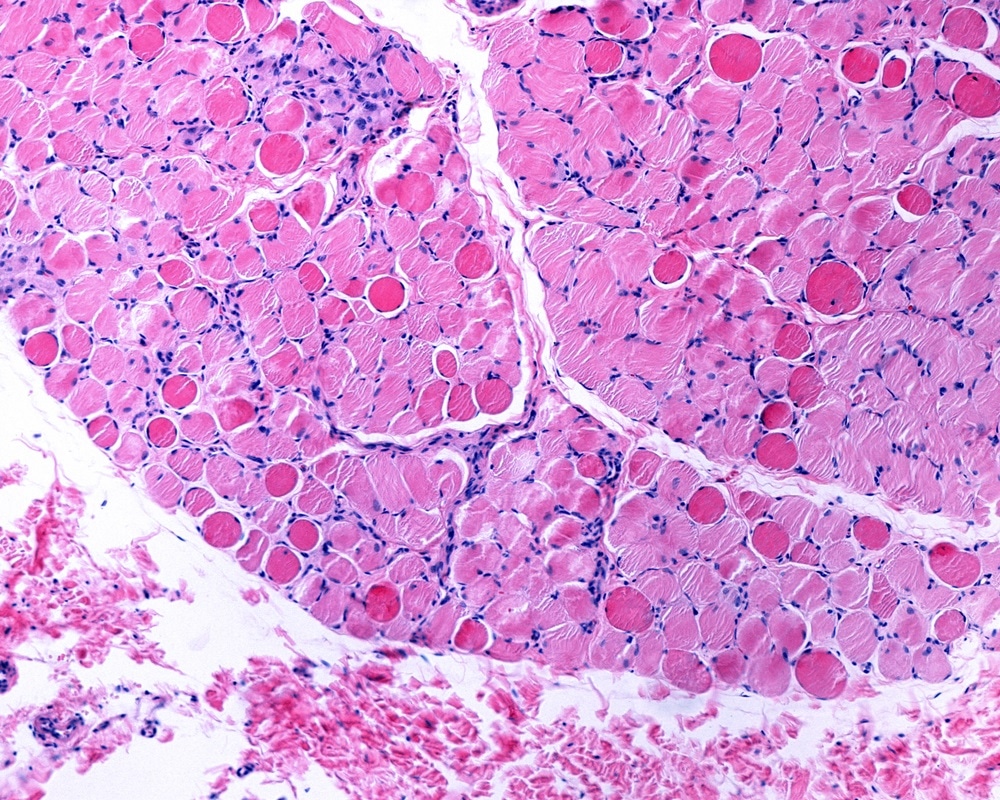Researchers at Children’s National Hospital in Washington, D.C have developed an experimental model of severe Duchenne muscular dystrophy that offers insight into the disrupted balance between inflammation and muscle degeneration seen in the disease.
 Image Credits: Jose Luis Calvo / Shutterstock.com
Image Credits: Jose Luis Calvo / Shutterstock.com
The team found that a large increase in activity of the cytokine transforming growth factor beta (TGF-β) following muscle injury causes muscle degeneration and inhibits regeneration.
Principal investigator Jyoti Jaiswal (Center for Genetic Medicine Research at Children's National) and colleagues hope that through understanding the model and the relationship between inflammation and muscle degeneration, researchers could start to develop therapies that can reduce the severity of symptoms and improve patients’ outcomes.
About Duchenne muscular dystrophy
Duchenne muscular dystrophy (DMD) is an X-linked genetic disorder that causes changes in the protein dystrophin, which maintains the integrity of muscle cells. This leads to muscle degeneration, chronic inflammation, weakness and a poor ability to regenerate any muscle tissue that has been lost.
Symptoms emerge early on in childhood and start with weaknesses in the upper-arm, shoulder, hip and thigh muscles that make it difficult to walk, climb stairs and stay balanced. Symptoms also include an altered gait, enlarged calves, a curved spine and eventually weakness in the heart and respiratory muscles that can cause cardiorespiratory failure and premature death.
The disease generally affects boys (about 6 in 100,000 individuals), but in rare cases, it has been seen in girls.
Researchers want to know exactly why muscle regeneration is poor
Although scientists know that muscle regeneration among boys with DMD is poor, they are still investigating the more precise reasons for this.
Now, Jaiswal and colleagues have developed a model which shows that a large increase in TGFβ that occurs once muscles have been damaged, suppresses the muscles’ ability to regenerate and induces fibroadipogenic progenitors (FAPs). This causes calcification of injured muscle fibers and disrupts muscle function.
What has this new study found?
Although inhibiting the accumulation of FAP is a part of the solution, the Children’s National Hospital team has found that altering the surrounding muscle environment that the increased TGFβ causes is a potential treatment target.
As reported in the journal JCI Insight, the researchers’ model of severe DMD has demonstrated for the first time that as early as three to four weeks of age, boys with the condition suffer from muscle injury, loss of muscle fibers and failed muscle regeneration.
In boys, the challenge due to muscle loss exists from early in their lives, but had not been mimicked previously in experimental models. TGFβ is widely associated with muscle fibrosis in DMD, when, in fact, our work shows its role in this disease process is far more significant."
Jyoti Jaiswal, Center for Genetic Medicine Research at Children's National
Researchers have previously tried to develop models that mimic symptom onset and disease progression, but co-senior author Terence Partridge says that this new model now provides insight into the “delicate balance” needed for muscle regeneration, as well as measurable information regarding what happens to the activity of muscle stem cells once this balance is disrupted.
"The D2-mdx experimental model is a relevant one to use to investigate the interplay between inflammation and muscle degeneration that is seen in humans with DMD," says co-lead author David Mázala. "This model faithfully recapitulates many features of the complex disease process seen in humans."
Drug inhibitor dampened the ten-fold increase in TGF β signaling seen in severe DMD
The researchers’ model shows that at just three to four weeks of age, there is a ten-fold increase in the activity of TGFβ when DMD is severe, compared with models of less severe forms of the disease.
An encouraging finding that the team also reports is that injecting an off-the-shelf inhibitor of TGFβ signaling into the muscles lowered the amount of FAPs. This led to an improved muscle microenvironment with reduced activity of the cytokine.
Co-lead author James Novak says the findings pave the way for future research that could lead to treatments that can reduce the severity of DMD and improve outcomes for patients.
"Ultimately, our goal is to improve the ability of patients to continue to maintain muscle mass and regenerate muscle," he concludes.
Sources:
Experimental model mimics early-stage myogenic deficit in boys with DMD. EurekAlert! 2020. Available at: https://www.eurekalert.org/emb_releases/2020-03/cnh-emm032320.php
Duchenne Muscular Dystrophy (DMD). MDA: Muscular Dystrophy Association 2020. Available at: https://www.mda.org/disease/duchenne-muscular-dystrophy
Journal references:
Cesareni G, et al. Fibro-adipogenic progenitors of dystrophic mice are insensitive to NOTCH regulation of adipogenesis. Life Science Alliance 2019. DOI: 10.26508/lsa.201900437
Mazala, D.G. et al. TGF-β–driven muscle degeneration and failed regeneration underlie disease onset in a DMD mouse model. JCI Insight 2020. DOI: 10.1172/jci.insight.135703